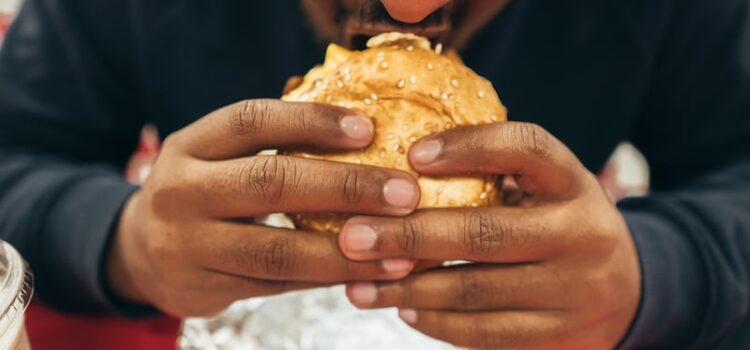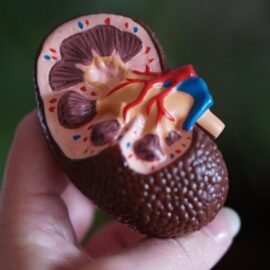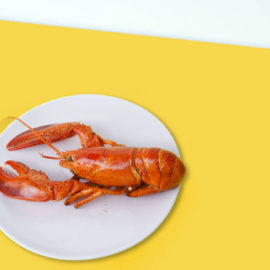

This article is an excerpt from the Shortform book guide to "Glucose Revolution" by Jessie Inchauspé. Shortform has the world's best summaries and analyses of books you should be reading.
Like this article? Sign up for a free trial here.
What exactly are carbohydrates? What different types of carbohydrates are there?
Carbohydrates are a macronutrient comprised of carbon, hydrogen, and oxygen and can be divided into complex and simple. Complex carbohydrates are formed from multiple sugar molecules bond together. Sugars, or simple carbohydrates, are either monosaccharides or disaccharides.
Keep reading to learn about the different types of carbohydrates and how they’re digested in the body.
Glucose and Other Carbohydrates
Glucose is a carbohydrate that the book Glucose Revolution defines as molecules that are created when carbon and water join together (as happens, for example, during photosynthesis). Plants bind glucose molecules together in various ways and for different purposes, forming three different types of carbohydrates: starch, fiber, and sugars.
1. Starch
Inchauspé explains that starches are chains of glucose that plants use as energy stores when they don’t have access to sunlight at night (and therefore can’t photosynthesize to make more energy-giving glucose).
During the day, plants make more glucose than they need, and with the help of enzymes, they join the excess glucose molecules into chains that form starch molecules. When a plant needs glucose again, it uses the enzyme alpha-amylase to break some molecules free from the starch chain. In our diet, we get starch from foods like potatoes, oats, and barley.
Inchauspé notes that like plants, our bodies use alpha-amylase to break down starch into glucose. This process starts with the enzymes in our saliva and ends when glucose molecules are freed in our gut. (Shortform note: The type of alpha-amylase in our mouths, also known as ptyalin, comes from the salivary glands. The alpha-amylase that digests food into glucose in our small intestine comes from the pancreas.)
2. Fiber
Inchauspé states that fiber is also made from chains of glucose molecules, but the molecules are joined together in different ways than those in starches. Fiber is tough, holding plants together and keeping them upright.
Because of fiber’s strength, no enzymes in our bodies can break it down, so it retains its structure while moving through our digestive system. This means that it doesn’t provide us with energy from glucose molecules. However, it does help keep our gut microbiome (the bacteria living in our digestive system) healthy.
| The Importance of Fiber Though we can’t break down fiber and turn it into glucose for energy, bacteria in the colon break it down through fermentation. The fiber fermentation process produces short-chain fatty acids (acids made up of just a few carbon atoms). Short-chain fatty acids play a huge role in the health of our gut because they promote the proliferation of good bacteria in our gut microbiome. Since a thriving microbiome is essential to overall health, eating enough fiber is a vital part of a healthy lifestyle. Additionally, the natural strength of plant fiber makes it useful for more than just our guts. It’s also used as a material for textiles, rope, and other commercial products. Materials made of plant fibers are more sustainable than materials made of plastics, which derive from non-renewable fossil fuels. Plant fibers are also cheaper and easier to produce than plastics, and they’re biodegradable. Common plant fibers used in commercial products include hemp, cotton, and jute. |
3. Sugar
Inchauspé defines glucose, fructose, and sucrose as sugars. They all taste sweet, but they serve different purposes for plants. Plants transform some glucose into fructose because fructose is sweeter. Fructose makes fruit sweet enough to attract animals, who then eat the fruit and spread the plant’s seeds through their waste.
(Shortform note: It’s not only the sweetness of fructose that makes fruit an effective medium for spreading plants’ seeds. According to Steven Gundry in The Plant Paradox, unlike glucose, fructose doesn’t signal fullness to the body. Therefore, animals who eat fruit will keep eating more, increasing the chance that the plant’s seeds will be spread.)
Sucrose (also known as table sugar) is also sweeter than glucose alone, and it’s made when glucose and fructose combine. Sucrose is a slightly smaller molecule than glucose and fructose, allowing plants to store more energy using less space.
(Shortform note: In addition to storing energy using space-efficient sucrose, plants compress glucose and fructose into sucrose so they can transport large amounts of energy more easily. Sucrose is dissolved in water within the plant and then moved through the phloem (vascular tissue designed to transport sugars in plants) into the stems and roots. Unlike in leaves, the plant cells in stems and roots don’t have chloroplasts, which are organelles necessary for photosynthesis. Therefore, they rely on this internal transport system for energy.)
When we eat fruit and other sweet foods, our guts absorb their glucose and fructose, which then enter the bloodstream. Sucrose takes a less direct route into the bloodstream: Sucrose from sweet foods breaks down into glucose and fructose with the help of enzymes. Some of the fructose molecules from sucrose break down further into glucose, but the rest remain intact.
(Shortform note: Sucrose is made up of 50% glucose and 50% fructose. As Inchauspé states, some fructose is then converted into glucose that can be used for energy. Studies suggest that this conversion—which happens in the small intestine—also helps protect the liver from excessive fructose exposure, which can cause damage and disease. Too much fructose at once can overwhelm the natural buffering capacity of the small intestine and cause fructose toxicity.)

———End of Preview———
Like what you just read? Read the rest of the world's best book summary and analysis of Jessie Inchauspé's "Glucose Revolution" at Shortform.
Here's what you'll find in our full Glucose Revolution summary:
- Why you feel hungry soon after you eat and get tired throughout the day
- The role glucose plays in your body, both positive and negative
- Strategies for taking control of your health and glucose levels






